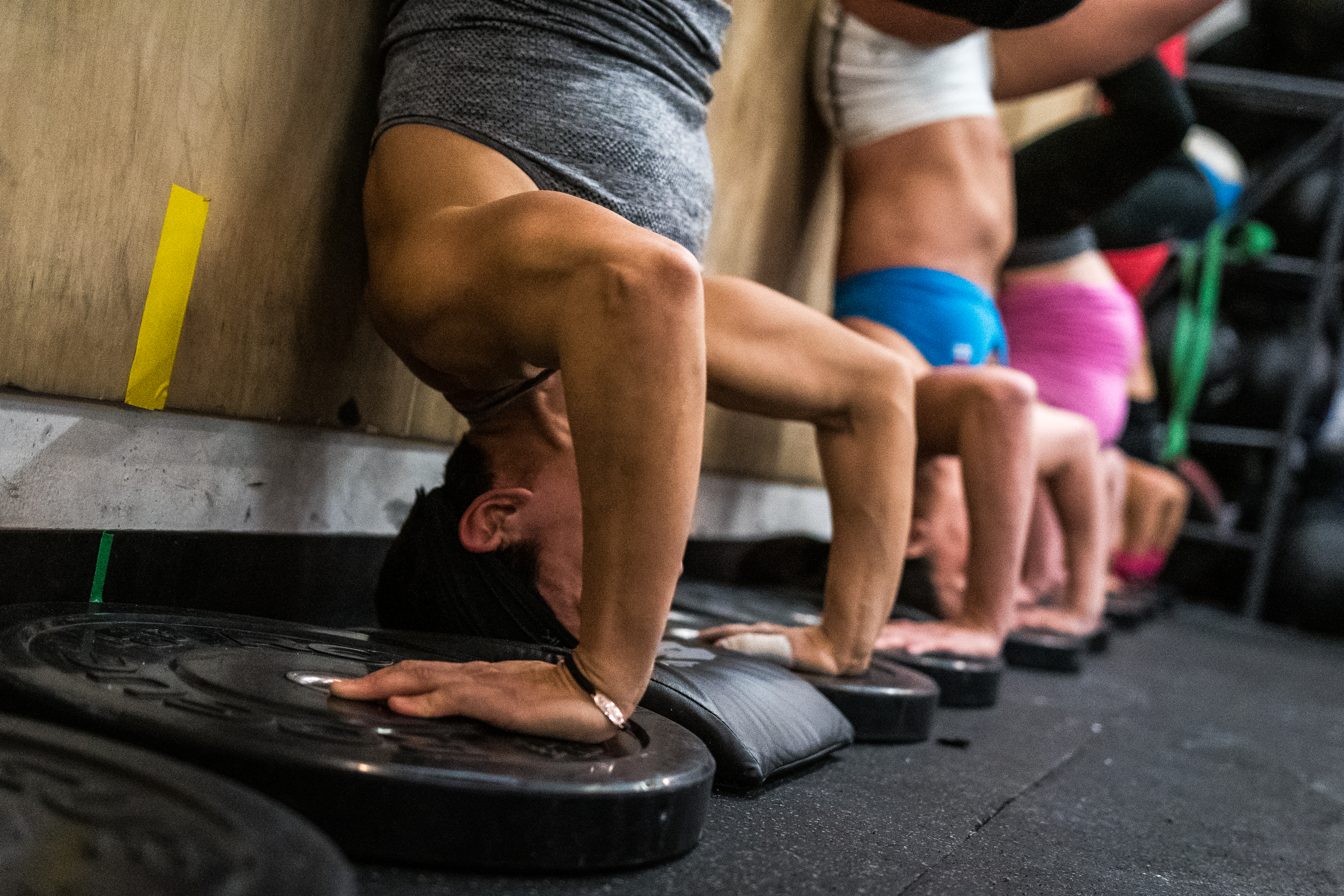Learning new skills and your nervous system
Coach Cory explains how the nervous system responds to group and individual training and why a private session could be just the thing if you’re struggling to master a high-skill movement.

Do you remember your first month of CrossFit? You had to learn the names of the movements, remember how to properly brace your core and squeeze your glutes, and a million other things.
You’d see your classmates swing from the rings and pull-up bars — possibly fearing that you’d be asked to put yourself out there and try something totally foreign to you. “Coach is asking me to do WHAT with all these people watching me?”
Yep, we’ve all been there. Welcome to a group class setting. And for some, being a part of a class is a huge accomplishment.
For the majority of us, being in a class setting puts us into “fight or flight mode,” from our sympathetic nervous system. Think back to learning a new movement; we’ll say double unders. You were probably so amped up at one point you realized you weren’t even breathing. Your coach walked up and said, “Take a few deep breaths, eyes forward. Let’s try again.”
You take a few deep breaths, fix your jump rope, take a step forward, bring your legs together, put your hands out by your sides and go at it again, stringing a few double unders together. That was your parasympathetic nervous system being stimulated. The rest and relaxed state. This allowed you to connect the pieces of what you’re asking from your body and brain to string together a complex movement like double unders.

Group classes are structured to improve the group first, then coaches can give individual attention and progressions. You can certainly learn high skill movements in a class setting — we see it as coaches every day! — if you’re struggling to master a new movement or just want to accelerate your progress, I suggest you consider personal training.
Working on high-skill movements in a one-on-one setting allows you to connect with your coach on a more intimate level. He or she is there to help JUST YOU achieve your goals and turn weaknesses into strengths. When we feel connected and comfortable in this setting, we are experiencing what’s called “psychological safety,” which allows us to take calculated risks without hesitation or fear of judgement from those around us —allowing us to be in that parasympathetic state, or state of relaxation, I mentioned before.
Being in a parasympathetic state can mean better motor control and improved retention of proficient movement patterns. Sounds like a recipe for success.
Improving your skill levels through one-on-one attention will also allow for a better experience in classes. You’ll go into your class knowing you’ve worked on your weakness (be it snatch, muscles ups, double unders … whatever you’re working on). That will give you a sense of confidence, allowing you to come out of that workout feeling accomplished and with feedback to give to your coach for your next private session.

For many of us who don’t come from an athletic background, working with a coach individually is the best way to achieve a muscle up or any of high skill movements or get better at the Olympic lifts. In my own experience working with a coach for the last two and a half years, I can attest that it has taken me places I never imagined.
It has become more than a training plan — it became a blueprint for life. It gives me accountability, a future goal structure, and the knowledge that if circumstances change, we can figure out another way to get to those goals.
I encourage you to try a one-on-one training session to complement the work you do in classes. Stop by the front desk or talk to a coach about individual attention could help you tackle your weakness and build new strengths.
2019 05 29